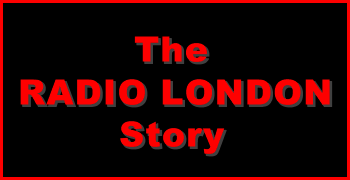Part One: Big L begins
|
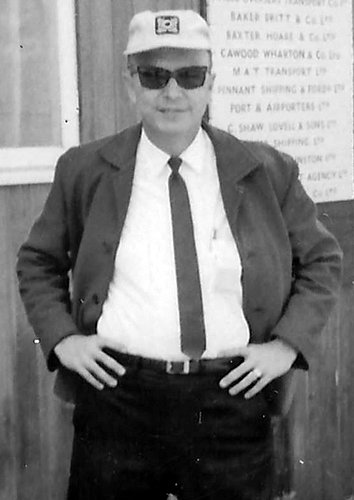
|
|
Don Pierson. Photo courtesy of Grey Pierson.
|
Radio London was the most popular and financially successful of all the sixties offshore broadcasting ventures. It won many millions of listeners and, despite being on the air for less
than three years, left a lasting legacy as the station which brought format radio (and jingles) to Britain. Radio London also provided the template - and much of the DJ talent - for the launch of the BBC's
pop music service, Radio One.
Radio London was the brainchild of an American car dealer, the mayor of Eastland Texas, Don Pierson. During the summer of 1964 he noticed an article in The Wall Street Journal describing the
arrival of offshore radio in Britain. Despite having no experience of broadcasting, Don was fascinated by the idea and immediately paid a visit to the UK. He flew out over the North Sea to take a look, listened to Radio
Caroline and decided he could do it better.
Back in the States he gathered together three other Texans to join him in the scheme: fellow car-dealers Tom Danaher and Mal McIlwain and oilman Jack McGlothlin. Each partner was responsible for raising
a quarter of the total needed and could bring in other investors.
|

|
|
Philip Birch. Photo courtesy of Gordon Sheppard.
|
In all it took less than twenty people to raise the $500,000 (then around £180,000) they estimated they required to finance the project. There was
a rumour at the time that Lady Bird Johnson, wife of American president Lyndon Johnson, was one of the investors, but there is no evidence to support this. The company they set up to operate the station was registered in
the Bahamas. US radio legend Gordon McLendon was consulted. He had been one of the pioneers of American Top 40 radio and owned the Dallas station KLIF (named after the Oak Cliff area of the city). He had also been one of
the people behind the Swedish pirate Radio Nord so was one of the few people in the world with the necessary experience. Philip Birch was appointed Managing Director. He set up the British sales company,
Radlon (Sales) Ltd. with offices based in London's fashionable Curzon Street.
Radio London's ship was a 780-ton former American minesweeper, bought for £28,000. Under an earlier name, the USS Density, she had disposed of some 500 mines and rescued several hundred men from a sinking ship. More
recently she had been owned by a Greek company which had renamed her Manoula. Now she was the mv Galaxy - an early suggestion for the station's name. The conversion work was carried out in Miami. RCA was awarded the contract
to supply the broadcast equipment and, on 22nd October 1964, the Galaxy set sail for Europe.
The Galaxy had been fitted with a new aerial mast. Radio London press releases claimed it was 212 feet high (“23 feet higher than Nelson's Column”) but there has been some doubt expressed about the accuracy of this
figure. Ian Anderson (in an article for Offshore Echos magazine) suggested it was probably more like 180 feet tall, 150 feet of which was visible above deck level.
|
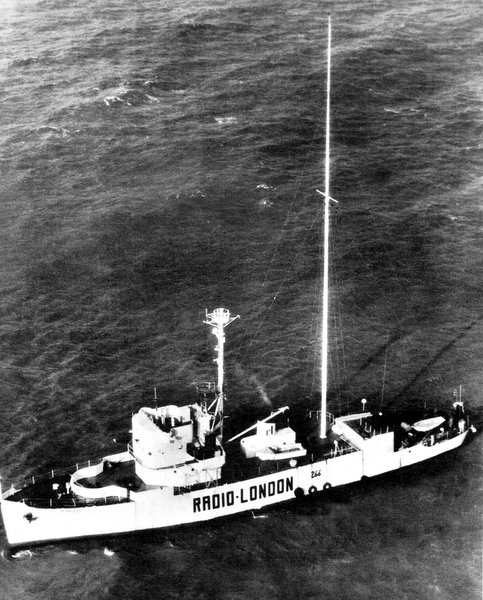
|
|
The mv Galaxy. Photo from ‘Beat Wave’ magazine.
|
Pierson's original plan was that the ship would re-broadcast taped programmes from KLIF Dallas, with the news and advertisements replaced. KLIF referred to itself as “Big D” so a similar jingle
package was ordered up from the PAMS company using the name “Big L”. However the idea of relaying KLIF was scrapped before the station was launched, much to Pierson's annoyance. This was just one of many disagreements
that caused a rift to develop between him and his fellow directors. The split in the management team, and especially between Pierson and Birch, even extended to an argument over the choice of ship's anchorage. This led to the
American taking the strange step of consulting Ronan O'Rahilly, boss of the rival Radio Caroline, on the suitability of Birch's intended anchorage. O'Rahilly thought that the spot in the Thames estuary he had
picked was inside territorial waters so, in November 1964, the Galaxy dropped anchor in an alternative position: off Frinton-On-Sea, Essex, safely outside the three mile limit.
The disagreements within the company continued. Eventually they resulted in Don Pierson being forced to resign from the station he had founded before it had even made it on to the air. He did, however, keep
a financial interest in the venture and later went on to launch another radio ship, home of the ambitious Radio England/Britain Radio project.
|

|
|
First voice, Paul Kaye. Photo from ‘Beat Wave’ magazine.
|
Meanwhile Big L test transmissions began. The first, on 5th December, revealed problems which took almost a fortnight to fix. The tests resumed on 16th. The following day Paul Kaye was
the first DJ to make an announcement. The first disc was a new release, Paper Tiger by Sue Thompson - a song which would become very familiar to listeners over the next
few weeks. The tests ended during the afternoon of 22nd December. At 6am the next day Pete Brady presented the first proper programme on Radio London with his opening record being Cliff Richard's
I Could Easily Fall (In Love With You). The first advert was for The News Of The World. The station was broadcasting on 1133 kilohertz, 264.8 metres (referred to on
the air as “266”) with, at that time, a power of 17 kilowatts.
 Earl Richmond on a test transmission for Radio London, inadevertently revealing Tony Windsor's real name, on 19th December 1964,
Kenny Everett ending the test broadcasts later the same day and Dave Dennis closing another day of tests. The first clip courtesy of
www.azanorak.com, the other two from the Kenny Everett ‘Offshore Radio Heaven’ CD (duration 2 minutes 26 seconds)
Earl Richmond on a test transmission for Radio London, inadevertently revealing Tony Windsor's real name, on 19th December 1964,
Kenny Everett ending the test broadcasts later the same day and Dave Dennis closing another day of tests. The first clip courtesy of
www.azanorak.com, the other two from the Kenny Everett ‘Offshore Radio Heaven’ CD (duration 2 minutes 26 seconds)
 Pete Brady on Radio London's Breakfast Show on the first official day of broadcasting - 23rd December 1964. This clip has been kindly donated by Hans Knot (duration 4 minutes 2 seconds)
Pete Brady on Radio London's Breakfast Show on the first official day of broadcasting - 23rd December 1964. This clip has been kindly donated by Hans Knot (duration 4 minutes 2 seconds)
|
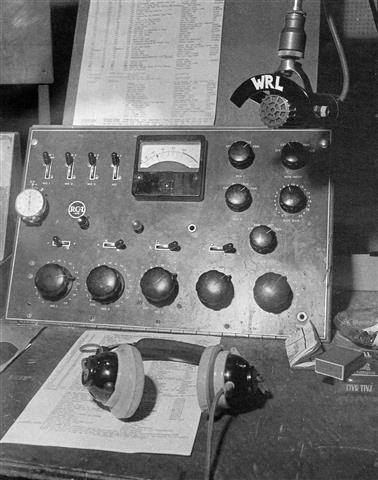
|
|
The first Radio London studio desk, made by RCA. Photo from ‘Beat Wave’ magazine.
|
The first Radio London disc-jockey crew was an experienced team, led by senior DJ Tony Windsor. He had previously broadcast in his home country of Australia as well as on Radio Atlanta and, briefly,
Radio Caroline as Tony Withers but, like all his colleagues, changed his name when he joined London. Also aboard were Paul Kaye - later to become more of a news-reader than DJ - and Earl Richmond, both of whom had worked
on forces broadcasting overseas, Pete Brady a Canadian DJ who had been on radio in the Caribbean, and Dave Dennis who had been heard on Radios Atlanta and Invicta as Neil Spence. The only novice was Kenny Everett who joined
with no radio experience at all but went on to become their biggest star. A couple of the older guys, Kaye and Richmond, struggled initially with the fast-moving Top 40 format but the station sound gradually came together.
 Paul Kaye trying to get to grips with the format and the equipment on Radio London's second full day on the air, 24th December 1964. This clip has been kindly donated by Hans Knot (duration 4 minutes 4 seconds)
Paul Kaye trying to get to grips with the format and the equipment on Radio London's second full day on the air, 24th December 1964. This clip has been kindly donated by Hans Knot (duration 4 minutes 4 seconds)
|
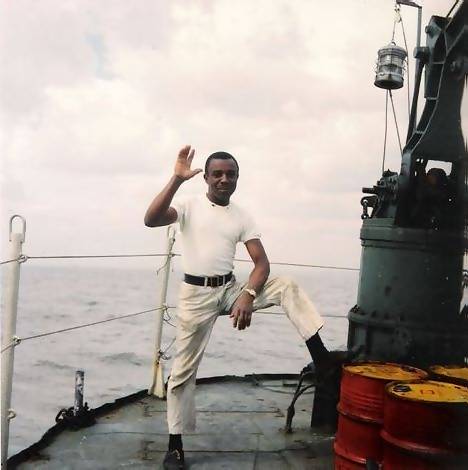
|
|
Michel Philistin. More of Mitch's pictures here.
|
Dave Cash joined the team a few days after the launch with Duncan Johnson coming aboard on 1st February 1965. When he arrived, Duncan found there
weren't any blankets for his bed - they were all in the studio being used to dampen the sound in what had previously been a corner of the ship's metal hold. The DJs had to endure some quite primitive conditions in those early
days. Kenny Everett told the Daily Mail that at the start of the station he was “ill for three weeks” and had to “examine each cornflake separately for weevils” but, as Radio London grew, the conditions
improved and, even at their worst, they were considerably better than on some of the rival stations. The ship's chief steward was Michel Philistin, a young Haitian who had crossed the Atlantic on board the Galaxy. He was
frequently mentioned on air and, despite initially speaking very little English, became a firm favourite with the listeners as well as the DJs.
 Duncan Johnson on Radio London a few weeks after joining the station. This recording courtesy of The Offshore Radio Archive (duration 2 minutes)
Duncan Johnson on Radio London a few weeks after joining the station. This recording courtesy of The Offshore Radio Archive (duration 2 minutes)
By late 1964 the two Radio Caroline ships had already proved that offshore radio could work in Britain but their programmes were somewhat unadventurous and quite middle-of-the-road. Radio London, by contrast,
was an out-and-out Top 40 station. Dave Cash recalls: “The difference between Caroline and London was the formatting. Caroline had always been what I call ‘catch-as-catch-can radio’. It was a great idea, it was
the first, it was responsible for all the others so, because of that, it deserves its place in history but you used to go out there with a bunch of records and play them. No one had any idea what order they were in. No one had
any idea of format at all.” Radio London's first programme director, Ben Toney, brought the successful American Top 40 format, as used on Gordon McLendon's KLIF, to Britain. It seems obvious now but
back then it was revolutionary. Big L won an audience immediately, even if for the first few weeks it was noticeably short of discs and somewhat repetitive.
| RADIO LONDON'S FIRST PROGRAMME SCHEDULE. |
6.00am Pete Brady
9.00 Earl Richmond
12.00pm Dave Dennis
3.00 Tony Windsor
6.00 Paul Kaye
9.00 closedown
Information from ‘The London Sound’.
|
Radio London was the first British offshore station to provide regular news bulletins. Before the launch various press agencies had been approached to provide these but they had proved too expensive.
A deal was nearly reached with the (pre-Murdoch) Sun newspaper. This was a Labour-supporting paper which had grown out of the defunct Daily Herald and was struggling to find a place in the market. Unfortunately
the paper's lawyers were worried about the legalities of getting involved with a pirate station and the deal was cancelled. As a result, Big L was forced to obtain its news by listening to the BBC, rewriting it, and
putting it out thirty minutes later: “on the half-hour, Radio London news tells you more, says it better.”
 Dave Dennis reading the 9.30am news on 9th January 1965. Radio London later added the Morse code for “RL” between each story. This clip taken from a recording shared on the Internet Radiocafé, now known as the
Radiotrefpunt (radio meeting point) forum (duration 1 minute 41 seconds)
Dave Dennis reading the 9.30am news on 9th January 1965. Radio London later added the Morse code for “RL” between each story. This clip taken from a recording shared on the Internet Radiocafé, now known as the
Radiotrefpunt (radio meeting point) forum (duration 1 minute 41 seconds)
|
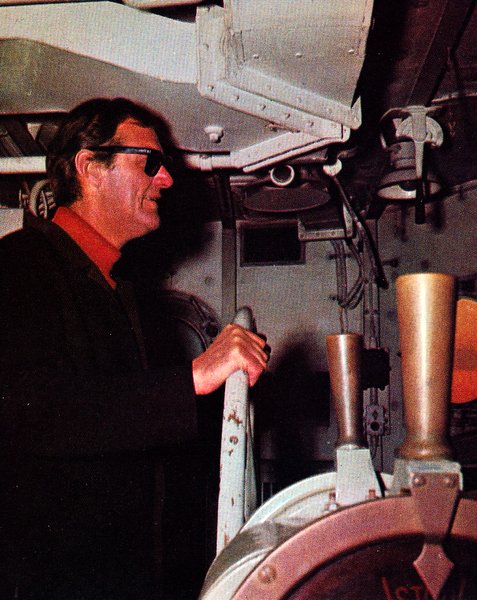
|
|
Senior DJ, Tony Windsor. Photo from ‘Beat Wave’ magazine.
|
Radio Caroline was largely run by people from the music-business and had been started to provide a platform for their artistes and records. By contrast Radio London was run by sales people. It was much more
business-like. Big L was there to make money. There was a very professional team both at sea and on land. The Galaxy was a happy ship on which to work and, of all the pirates, Radio London had by far the lowest turnover of staff
although occasionally a DJ would arrive and then disappear again quite quickly if he did not fit in with the close-knit team aboard.
Radio London's success was immediate and Caroline South in particular lost thousands of listeners within only a few months. A National Opinion Polls survey conducted in February 1965 for Big L revealed that,
in an area south of a line drawn between The Wash and The Severn, on an average day, 2,170,000 listeners were tuned to them. Only 1,090,000 were with Caroline South. These figures were disputed by the rival station. By May an
NOP survey showed that at peak time, between 12.30 and 1pm, Big L had 1,630,000 listeners. The whole Caroline network (i.e. both ships) had one million.
Much of the station's success was due to the leadership of Tony Windsor. A middle-aged man with something of a drink problem, “T.W” was a surprising hero but he was revered by the other disc-jockeys and he
helped to train them into arguably the best team British radio had heard.
|
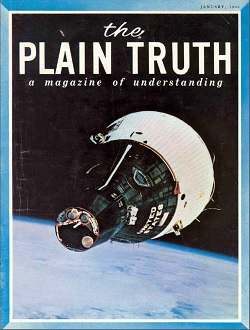
|
|
The cover of an issue of ‘The Plain Truth’ magazine from January 1966, published by the Worldwide Church of God who also produced ‘The World Tomorrow’ broadcasts. Scan courtesy of
www.herbert-armstrong.org.
|
The station's playlist was a Top 40 which differed noticeably from the UK sales chart. It was much faster moving, was often weeks ahead of the ‘real’ chart and on many occasions included songs
which weren't in the sales chart at all. Known as the Fab 40, there is a set from 24th January 1965 to the station close-down on the Radio London website.
From January 1965 Big L carried a religious programme, The World Tomorrow, initially weekly but quickly extended to three times a week and then daily. The programme was sponsored by the Worldwide
Church of God of Pasadena California who paid £300 per show for the privilege of being on Radio London. The income from this one programme paid for the basic running-costs of the entire ship. Other sponsored shows
arrived, both evangelical and secular. The Voice of Prophecy began a weekly broadcast every Sunday from February 1965. From 7th March Miners Make-Up financed UK Tops The World also on a Sunday. This was later
joined by The Cema Bingo Show, The Colgate-Palmolive Request Hour, The Bromley Half-Hour, Call In At Curry's and many others. (More on sponsored shows here.)
 UK Tops The World on Radio London from 18th April 1965. Recording courtesy of The Offshore Radio Archive (duration 2 minutes 32 seconds)
UK Tops The World on Radio London from 18th April 1965. Recording courtesy of The Offshore Radio Archive (duration 2 minutes 32 seconds)
Major advertisers were only too happy to buy airtime at a peak rate of £76 for 30 seconds. Within two years the station had paid off its initial launch costs and made a further one million pounds
profit. Philip Birch was rewarded by the grateful American directors with a Rolls Royce car.
Part two of ‘The Radio London Story’ over the page.
With grateful thanks to ‘The London Sound’ by Brian Long and ‘The Wonderful Radio London
Story’ by Chris Elliot.
|

